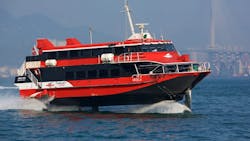CUTRIC report outlines effective strategies to invest in non-traditional transportation systems
The Canadian Urban Transit Research and Innovation Consortium (CUTRIC) released a research report that outlines effective strategies for infrastructure investments in non-traditional transportation systems – such as aerial transit, micromobility like bikes or e-bikes, ferries, on-demand transit and autonomous shuttles – in Canada.
“Traditional modes of public transportation like buses and trains provide the backbone for our networks. Non-traditional options like aerial systems, bike sharing and ferries offer unique opportunities to enhance and strengthen our transit networks by addressing first kilometer/last kilometer challenges, mitigating congestion and improving the sustainability of our transportation ecosystem,” said Josipa Petrunic, president and CEO of CUTRIC.
The report also CUTRIC’s recommendations for a successful implementation of non-traditional transport modes by:
- Increasing public trust and awareness of the non-traditional transportation modes by promoting their operation, safety and reliability.
- Developing clear and consistent regulations by collaborating with regulators, industries and communities.
- Securing support from the government of Canada to develop policies, frameworks and financial support for the non-traditional transit systems.
- Adopting financing models that align with delivery by creating opportunities to aggregate private capital and share risk.
The research was supported by the Canada Infrastructure Bank (CIB), with the aim to enhance knowledge across the sector of non-traditional modes of transit as an effective option for infrastructure investment.
“Investment in public transit is critical for Canada to support its economy, address climate objectives and connect Canadians. This research, highlighting investment opportunities that can expand our networks, is important for leaders in transit, cities and the private sector to reflect on as we work together to address these goals,” said Ehren Cory, CIB CEO.
The report notes:
- Shared micromobility solutions, such as bicycles and electric bicycles (e-bikes), have great potential as low-cost options for expanding mobility networks. The report focuses on bike sharing as a sustainable transport option that uses electric or traditional bikes to connect people to public transit.
- Ferries can be faster, more efficient and more direct than bridges and tunnels and are highly effective when integrated with existing land-based transit systems, especially in regions with inland waterways.
- On-demand services offer flexibility, convenience and efficiency in transportation, especially in new communities or areas with lower population density and during off-peak hours.
- Autonomous shuttles have the potential to improve public transit by using technology and Artificial Intelligence to connect people to their destinations.
The full report can be viewed here.


